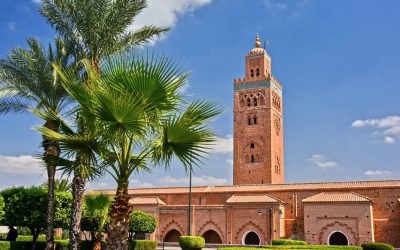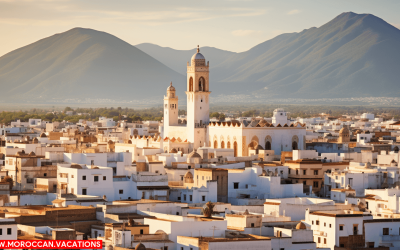The History of Marrakesh’s Rooftop Gardens
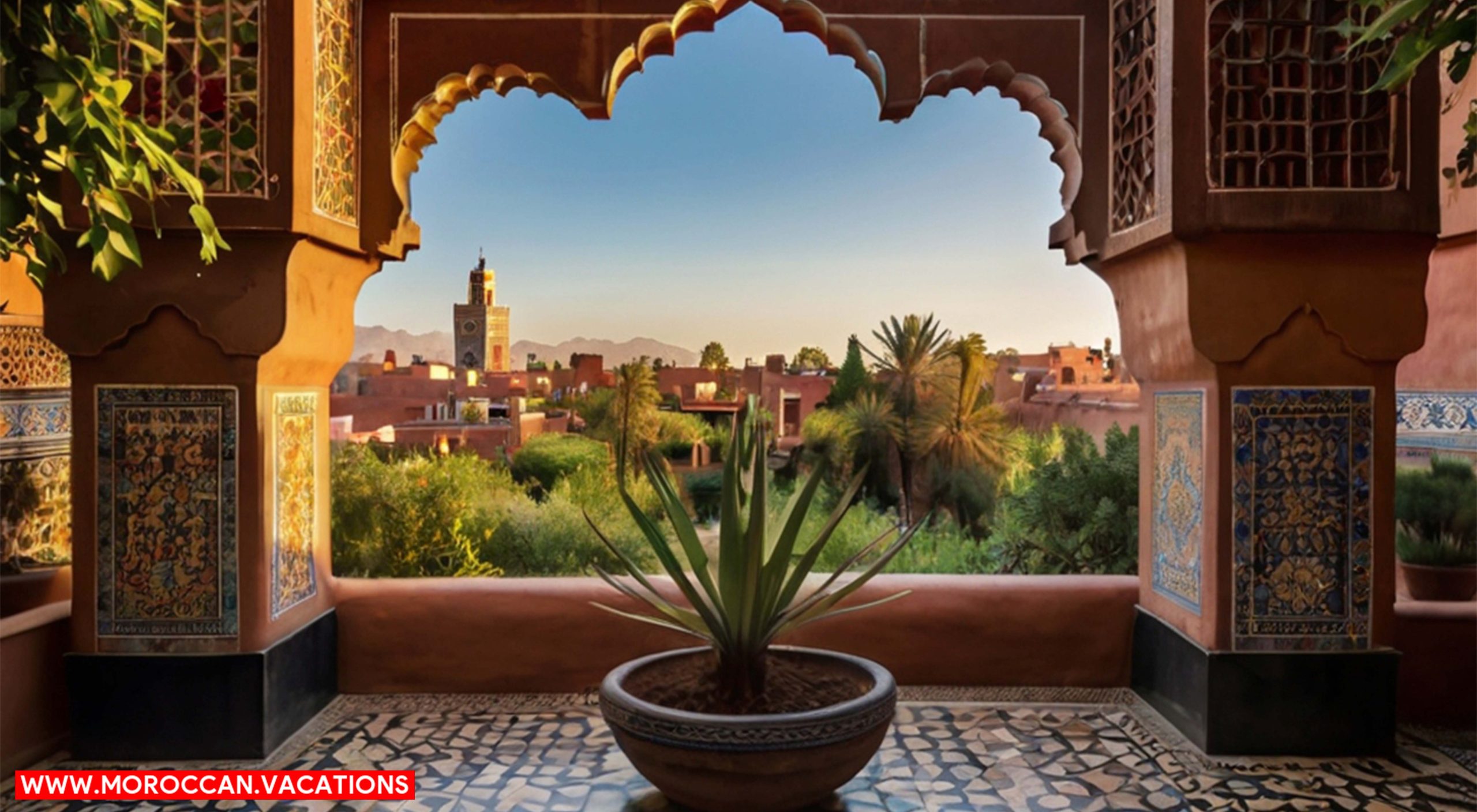

Escape the bustling streets of Marrakesh and discover a hidden oasis above the city. Welcome to Marrakesh’s rooftop gardens, where tranquility reigns and serenity awaits. These lush green spaces, tucked away amidst the vibrant chaos below, offer a sanctuary for those seeking respite. Immerse yourself in the beauty of these unique gardens, each with its own distinct charm and allure. From the moment you step foot onto the rooftop, you’ll be transported to a world of peace and freedom.
To understand the origins of Marrakesh’s rooftop gardens, you must delve into the rich history of this vibrant city and the innovative use of space that has been a hallmark of its architecture. Marrakesh, nestled in the heart of Morocco, has a history that dates back centuries, and its rooftop gardens have played a significant role in shaping the city’s landscape.
Throughout its history, Marrakesh has been influenced by various cultures, including Berber, Arab, and Andalusian. This unique blend of cultures is reflected in the city’s architecture, where the use of space is a key element. Marrakesh’s buildings are known for their intricate designs, vibrant colors, and clever utilization of every available area.
Rooftop gardens in Marrakesh have their roots in the ancient concept of utilizing rooftops as living spaces. The idea of creating a garden oasis above the bustling city streets was born out of a desire for privacy, tranquility, and a connection to nature. These gardens, often adorned with aromatic flowers, lush greenery, and bubbling fountains, became a sanctuary for those seeking respite from the busy city life below.
The architectural ingenuity of Marrakesh’s rooftop gardens is evident in their design. They are carefully crafted to maximize space, with terraces, walkways, and seating areas seamlessly integrated into the overall layout. The rooftops are transformed into serene havens, where one can escape the chaos of the city and immerse oneself in the beauty of nature.
Today, Marrakesh’s rooftop gardens continue to be cherished spaces, offering a sense of freedom and tranquility high above the bustling streets. They serve as a testament to the city’s rich history and its enduring commitment to innovative architectural design.
Exploring the Different Types of Rooftop Gardens in Marrakesh
There are various types of rooftop gardens in Marrakesh that you can explore, each offering its own unique charm and ambiance. From traditional Moroccan designs to modern and minimalist styles, these rooftop gardens showcase the creativity and ingenuity of Marrakesh’s residents.
One popular rooftop garden design in Marrakesh is the traditional Moroccan oasis garden. These gardens are characterized by their lush greenery, intricate tile work, and calming water features. You can find them in riads, traditional Moroccan houses with an inner courtyard. Stepping into one of these rooftop gardens is like entering a peaceful sanctuary amidst the bustling city.
Another type of rooftop garden design in Marrakesh is the modern and minimalist style. These gardens focus on simplicity, with clean lines and minimalistic plantings. They often feature sleek furniture, geometric shapes, and a neutral color palette. These rooftop gardens offer a contemporary and chic atmosphere, perfect for those seeking a more modern oasis.
In addition to their aesthetic appeal, rooftop gardens also offer numerous benefits. They act as natural insulation, reducing energy consumption and lowering the carbon footprint. They also provide a habitat for birds and insects, contributing to biodiversity in the city. Furthermore, rooftop gardens help reduce urban heat island effect, improving air quality and reducing noise pollution.
Whether you prefer the traditional Moroccan oasis garden or the modern and minimalist style, exploring the different types of rooftop gardens in Marrakesh is a delightful experience. Each rooftop garden offers a unique escape from the hustle and bustle of the city, providing a serene and tranquil oasis above the rooftops.
Must-Visit Rooftop Gardens in Marrakesh
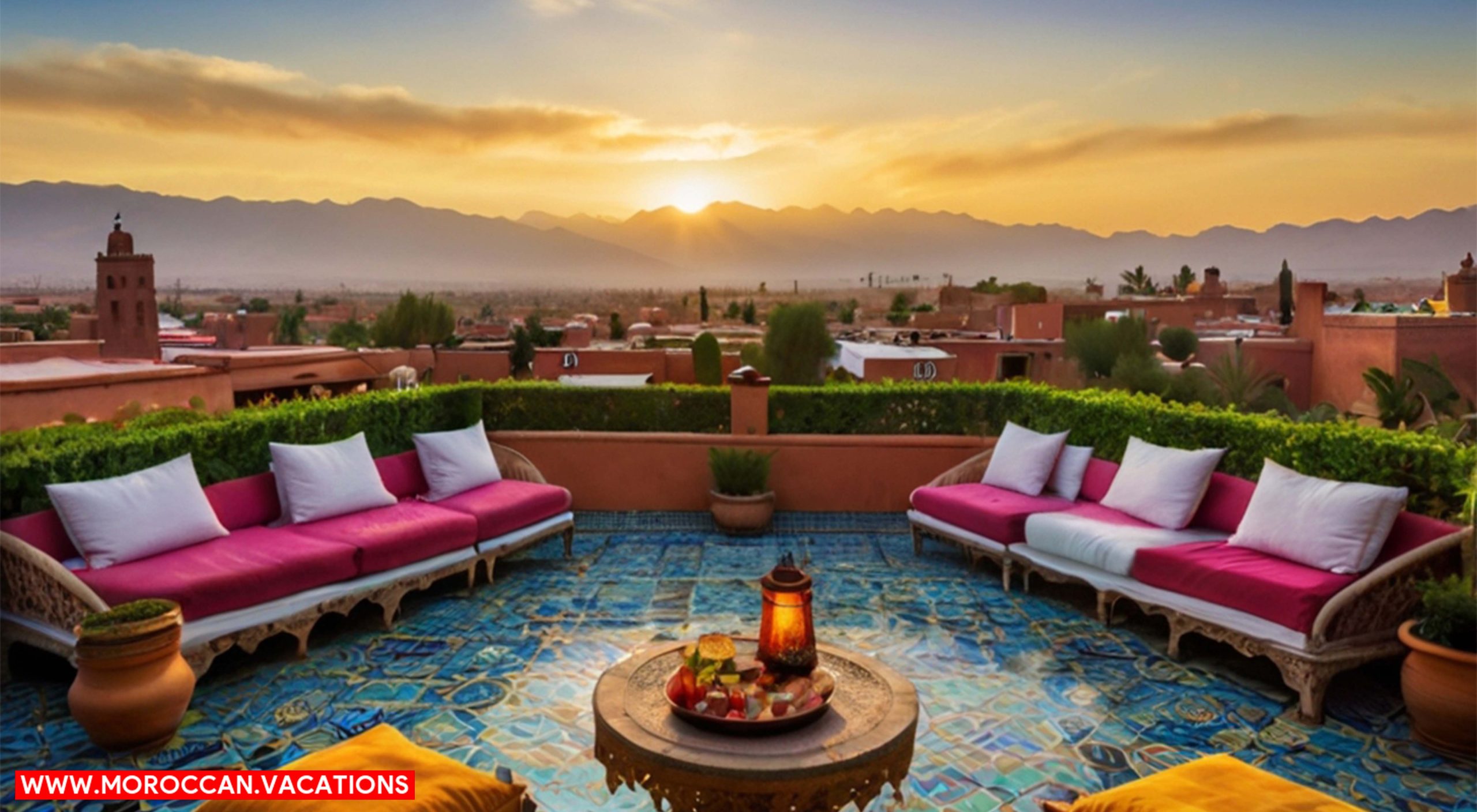

Make sure to visit Marrakesh’s must-visit rooftop gardens for a breathtaking experience above the city. These hidden gems offer a peaceful escape from the bustling streets, allowing you to soak in the beauty of nature while taking in panoramic views of Marrakesh. Here are four rooftop gardens that should be at the top of your list:
- Le Jardin Secret: Step into a tranquil oasis with traditional Moroccan designs at Le Jardin Secret. This rooftop garden features geometric patterns, lush greenery, and vibrant tiles, creating a vibrant and serene atmosphere.
- La Terrasse des Épices: Experience the vibrant colors and scents of Marrakesh at La Terrasse des Épices. This rooftop garden boasts a variety of aromatic plants, creating a sensory delight. Enjoy a cup of traditional Moroccan tea while taking in the breathtaking views of the city.
- Atay Café: Discover a hidden gem in the heart of the Medina at Atay Café. This rooftop garden offers a cozy and intimate atmosphere, with beautiful plants and comfortable seating. Indulge in delicious Moroccan cuisine while enjoying the peaceful ambiance.
- Kechmara: Immerse yourself in contemporary rooftop garden designs at Kechmara. This modern rooftop oasis features sleek lines, minimalist decor, and a trendy rooftop bar. Sip on refreshing cocktails while gazing at the stunning cityscape.
Visiting these rooftop gardens not only offers a delightful escape, but also provides numerous benefits. Rooftop gardens help reduce air pollution, absorb rainwater, and provide insulation, making them environmentally friendly. So, don’t miss out on the opportunity to explore these must-visit rooftop gardens in Marrakesh and enjoy a unique experience above the city.
Tips for Planning a Visit to Marrakesh’s Rooftop Gardens
When planning your visit to Marrakesh’s rooftop gardens, consider these helpful tips to make the most of your experience above the city’s bustling streets. Marrakesh is known for its stunning rooftop gardens, offering a serene oasis amidst the vibrant city. To ensure a memorable visit, it’s important to choose the best time to explore these rooftop havens. The ideal time is during the spring and autumn seasons when the weather is pleasant, and the gardens are in full bloom. Marrakesh’s rooftop gardens are a popular attraction, so it’s advisable to arrive early in the day to avoid crowds and enjoy the tranquility. Make sure to research and prioritize the popular rooftop gardens in Marrakesh, such as the Jardin Majorelle, Le Jardin Secret, and the Bahia Palace gardens. These gardens showcase the city’s rich history, mesmerizing architecture, and exquisite flora. Before visiting, check the opening hours, as some gardens may have restricted access or specific visiting times. Lastly, don’t forget to bring your camera to capture the breathtaking views and vibrant colors that Marrakesh’s rooftop gardens have to offer.
The Unique Features of Marrakesh’s Rooftop Gardens
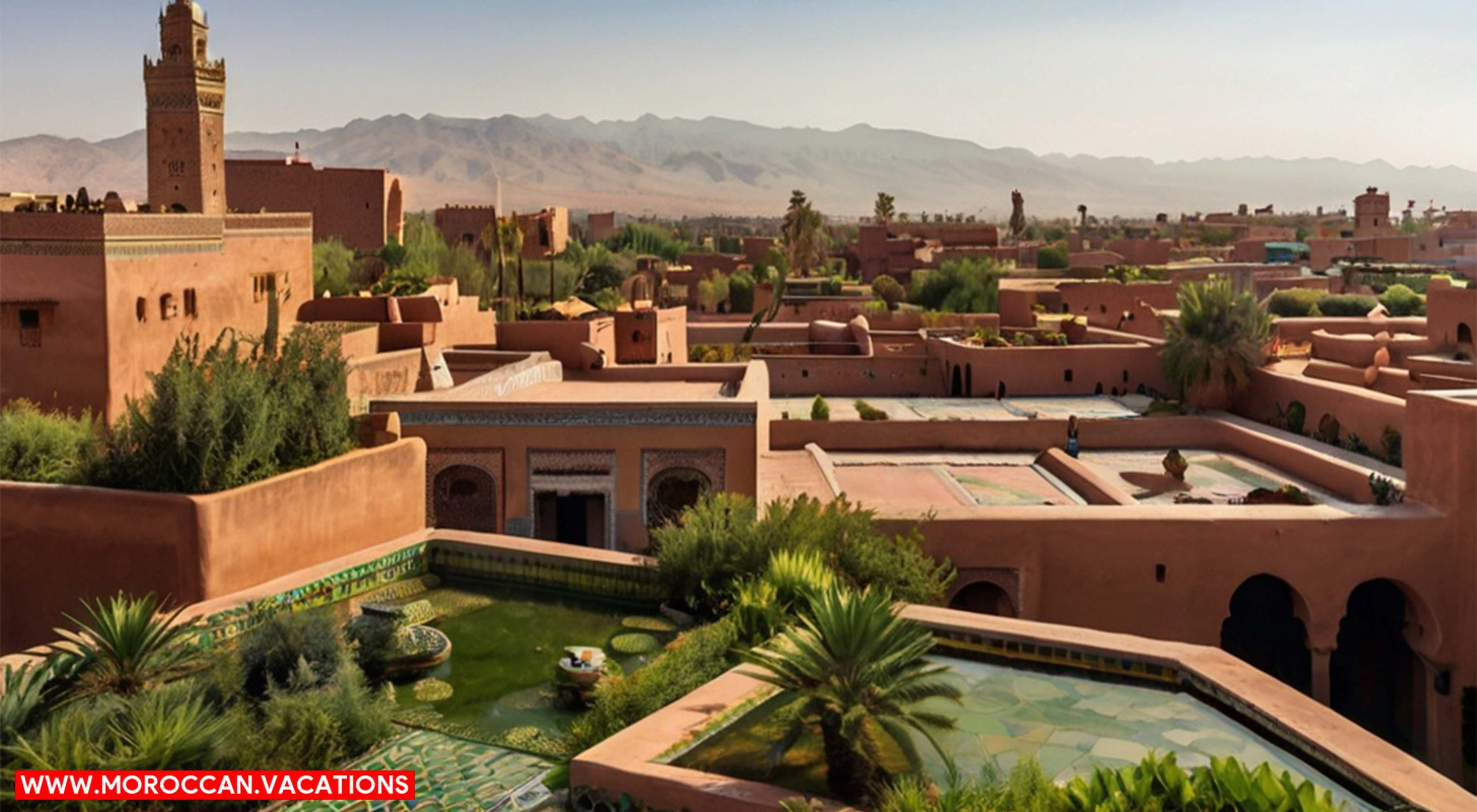

To truly appreciate Marrakesh’s rooftop gardens, immerse yourself in their unique features that transport you to a world of tranquility above the bustling city streets. These gardens are unlike any other, with their cultural significance and stunning design. Here are some of the unique features that make Marrakesh’s rooftop gardens so special:
- Lush Greenery: As you step onto the rooftop gardens, you’ll be greeted by an abundance of vibrant plants and flowers. The lush greenery creates a peaceful and refreshing atmosphere, providing a welcome escape from the urban chaos below.
- Traditional Moroccan Architecture: The rooftop gardens in Marrakesh are typically adorned with traditional Moroccan architecture. Intricate tilework, ornate arches, and beautiful water features are common sights, adding to the charm and authenticity of these gardens.
- Panoramic Views: From the rooftop gardens, you’ll be treated to breathtaking panoramic views of the cityscape. Take a moment to admire the stunning skyline, with the Atlas Mountains in the distance. It’s a sight that will leave you feeling inspired and in awe.
- Serenity and Tranquility: Marrakesh’s rooftop gardens offer a peaceful oasis amidst the hustle and bustle of the city. Whether you’re enjoying a cup of traditional Moroccan tea or simply taking a leisurely stroll, the tranquil ambiance of these gardens will rejuvenate your mind, body, and soul.
Immerse yourself in the unique features of Marrakesh’s rooftop gardens and experience the cultural significance they hold. These hidden gems are a testament to the rich history and vibrant traditions of Morocco, offering a glimpse into a world of serenity and beauty above the vibrant city streets.
How Marrakesh’s Rooftop Gardens Contribute to the City’s Sustainability
By utilizing innovative gardening techniques and sustainable practices, Marrakesh’s rooftop gardens significantly contribute to the city’s overall sustainability. These rooftop gardens not only provide a lush oasis above the bustling city streets but also play a crucial role in minimizing the environmental impact of urbanization.
One way in which Marrakesh’s rooftop gardens promote sustainability is through their use of sustainable practices. These gardens prioritize organic gardening methods, using natural fertilizers and pest control techniques to ensure the health of the plants without harming the environment. Additionally, rainwater collection systems are implemented to minimize water waste and reliance on external water sources. This allows the gardens to thrive while conserving precious resources.
To further reduce their environmental impact, the rooftop gardens in Marrakesh also focus on biodiversity and ecosystem preservation. By incorporating a variety of plant species, these gardens create habitats for insects, birds, and other wildlife, promoting a thriving urban ecosystem. This biodiversity not only enhances the visual appeal of the gardens but also contributes to the overall health of the city’s environment.
Moreover, these rooftop gardens serve as natural insulation, reducing the energy consumption of the buildings they are situated on. The vegetation helps to regulate temperature, keeping the interiors cooler during hot summers and warmer during colder winters. This reduces the need for excessive air conditioning or heating, leading to lower energy usage and carbon emissions.
The Cultural Significance of Rooftop Gardens in Marrakesh
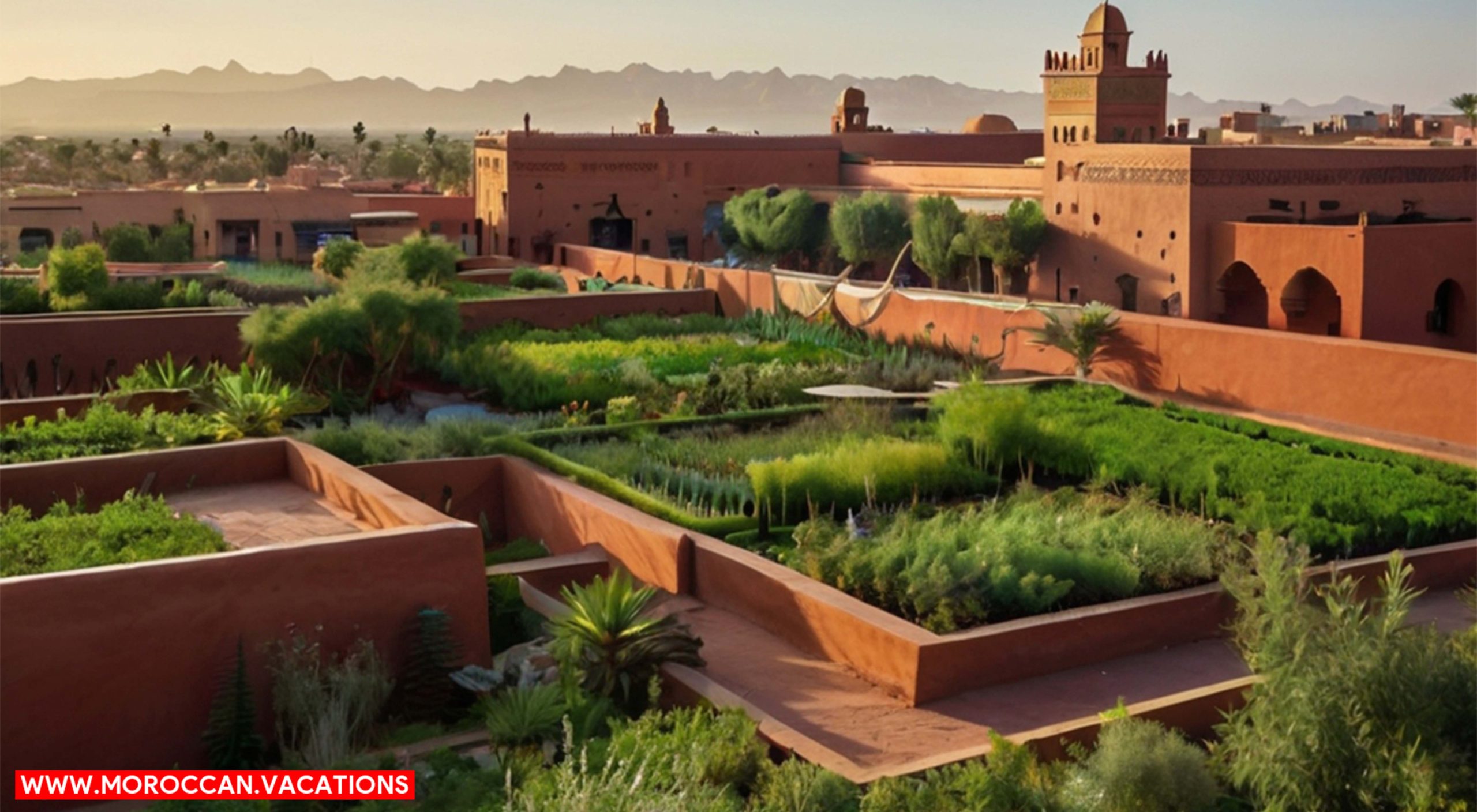

Discover the rich cultural heritage woven into Marrakesh’s rooftop gardens through the vibrant combination of traditional Moroccan design and lush greenery. These rooftop gardens not only provide a peaceful retreat from the bustling city below, but also serve as a reflection of the cultural traditions and architectural design that have shaped Marrakesh throughout its history.
- Cultural Traditions: Marrakesh’s rooftop gardens are deeply rooted in the cultural traditions of Morocco. They incorporate elements such as intricate tile work, colorful mosaics, and traditional Moroccan patterns, creating a visual feast for the senses.
- Architectural Design: The design of Marrakesh’s rooftop gardens is a testament to the city’s architectural prowess. From the geometric shapes and symmetrical lines, to the use of natural materials like stone and wood, these gardens showcase the skill and craftsmanship of Moroccan artisans.
- Community Gathering Spaces: Rooftop gardens in Marrakesh have long been used as gathering spaces for the local community. They serve as places for relaxation, socialization, and even celebrations, bringing people together and fostering a sense of community.
- Preservation of Heritage: By preserving and promoting rooftop gardens, Marrakesh is able to honor and showcase its cultural heritage to both locals and visitors. These gardens are a living testament to the city’s history and traditions, ensuring that they are passed down to future generations.
Experiencing the Tranquility of Marrakesh’s Rooftop Gardens
Immerse yourself in the tranquil ambiance of Marrakesh’s rooftop gardens, where the lush greenery and traditional Moroccan design create a serene oasis above the bustling city. As you step onto the rooftop, the sounds of the city fade away, replaced by the gentle rustling of leaves and the soothing chirping of birds. The rooftop gardens offer a unique experience, allowing you to escape the chaos and experience tranquility in the heart of Marrakesh.
One of the key elements that contribute to the peaceful atmosphere is the design of the rooftop gardens. The traditional Moroccan architecture is characterized by geometric patterns, vibrant colors, and intricate details. The gardens are adorned with ornate tiles, ornamental fountains, and comfortable seating areas, inviting you to relax and unwind. The careful placement of plants and flowers adds to the sense of tranquility, creating a harmonious balance between nature and architecture.
To further enhance your experience, let’s take a closer look at the elements that make up the rooftop garden design:
| Element | Meaning |
|---|---|
| Lush Greenery | Symbolizes growth, renewal, and vitality |
| Traditional Moroccan Design | Reflects the rich cultural heritage of Marrakesh |
| Serene Oasis | Represents a sanctuary, a place of calm and relaxation |


Samira Amrani
The passionate author behind Moroccan Vacations, sharing her expertise and love for Moroccan culture, cuisine, and travel experiences to inspire wanderlust in every reader.
Related Articles
Beyond the Bustle: Exploring the Tranquil Historical Sites of Marrakesh
mmerse yourself in serene tranquility with breathtaking views of Koutoubia Mosque. Explore the beauty of scaled tranquility in every moment.
From Culture To Nature: 15 Places To Experience In Tetouan, Morocco
Discover the charm of Tetouan, Morocco with our guide to 15 must-visit places. Explore the rich culture, historical sites, and breathtaking landscapes this enchanting city has to offer.
Explore Blue Pearl Of Morocco: 15 Must-See Destinations In Chefchaouen
Discover the enchanting Blue Pearl of Morocco with our guide to 15 must-see destinations in Chefchaouen. Immerse yourself in the mesmerizing blue hues of this picturesque city, from its charming streets to its historic landmarks.

